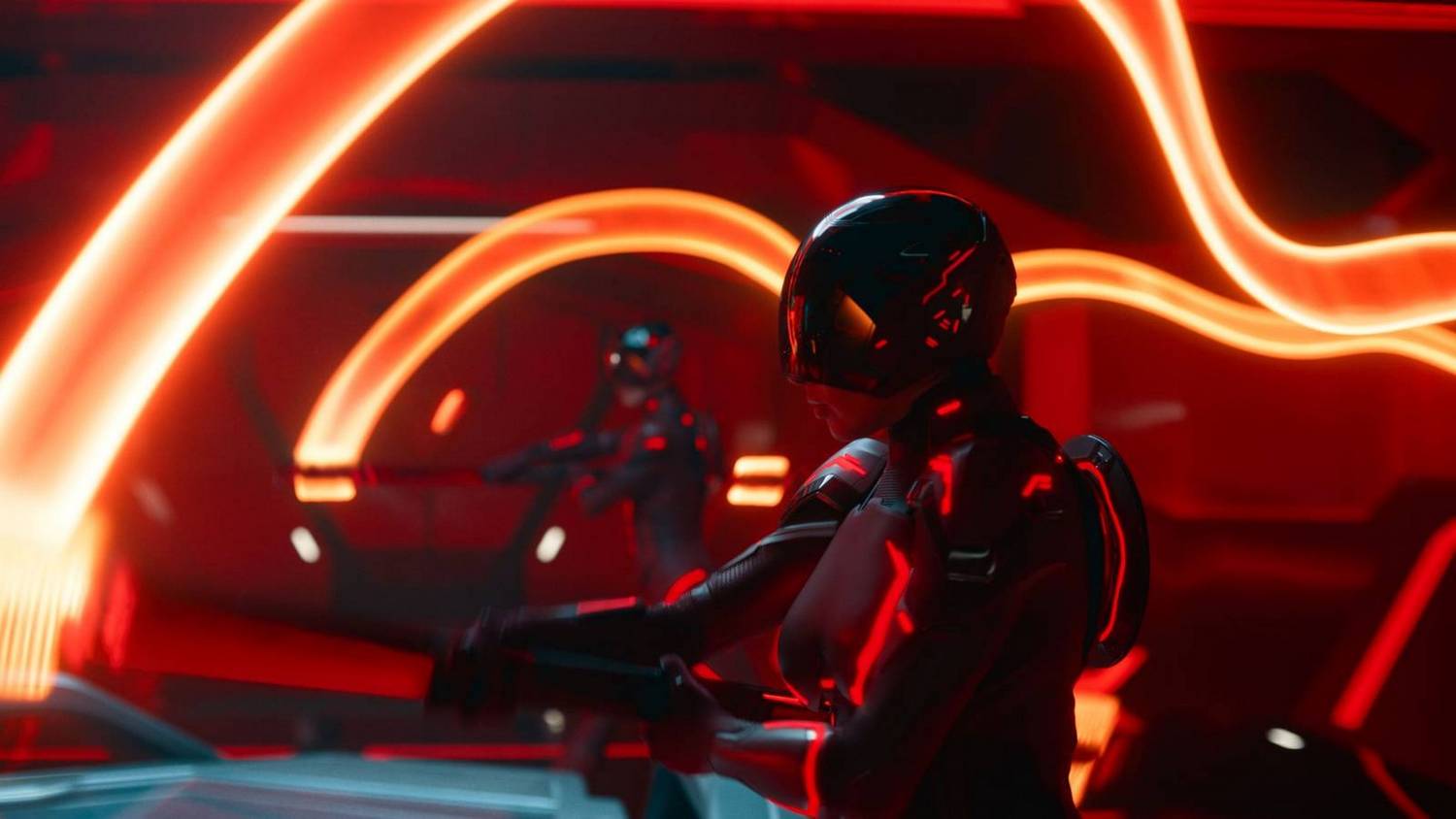From Grid to Sark: Analyzing the ‘TRON: Ares’ Post-Credits Sequence and the Blueprint for ‘TRON 4’
Popular Now
 Candy Crush Saga
Candy Crush Saga
 Auto X Drift Racing 3
Auto X Drift Racing 3
 Geometry Dash
Geometry Dash
 League of Legends
League of Legends
 Sonic the Hedgehog™ Classic
Sonic the Hedgehog™ Classic
 Stumble Guys
Stumble Guys
 Brawl Stars
Brawl Stars
 Genshin Impact
Genshin Impact
 BeamNG.drive
BeamNG.drive
 Minecraft
Minecraft 
The release of TRON: Ares has reignited the decades-long passion for the digital frontier, delivering a fresh narrative while carefully honoring the franchise’s deep gaming and cinematic history. Crucially, the film’s conclusion, and specifically its mid-credits sequence, serves as a high-stakes bridge to the future, linking the fate of the new characters with the legendary figures of the past. It’s a masterful piece of sequel bait, packed with Easter eggs and a literal transformation that sets the stage for a potential TRON 4—a prospect stars Evan Peters and Gillian Anderson have already started pitching ideas for.
 The Mid-Credits Scene: Julian Dillinger Becomes Sark
The Mid-Credits Scene: Julian Dillinger Becomes Sark
The central video game antagonist of the film, Julian Dillinger (played by Evan Peters), the morally bankrupt CEO of Dillinger Systems and grandson of the original villain Ed Dillinger, meets his destiny in the virtual realm. After his disastrous real-world actions—which include the digital chaos unleashed and the death of his mother, Elisabeth (Gillian Anderson)—Julian flees from law enforcement by digitizing himself into the remnants of his own decimated Grid.
The Critical Transformation:
Julian arrives in a ruined, fragmented landscape—the aftermath of the virus that decimated his server. In the desolate core of his destroyed digital headquarters, a classic, glowing orange Identity Disc rises from the floor. This is not the triangular disc used by his programs (Ares and Athena), but the iconic circular disc from the original 1982 TRON movie. When Julian grasps the disc, he screams in agony as a digital framework envelopes his body. The shape that materializes around him is unmistakable:
- Sark’s Armor: The overlay forms the exact silhouette of the antagonist Sark, the ruthless Games Master and chief enforcer of the Master Control Program (MCP) from the original film. Sark was a program based on the likeness of Julian’s grandfather, Ed Dillinger.
- Legacy Come Full Circle: By transforming Julian into Sark, the film establishes him as the new embodiment of the franchise’s legacy villain. Director Joachim Rønning confirmed this was a deliberate move to honor the franchise and hint at a major threat for the next installment. The visual details, including the way Julian stumbles back, even mirror Sark’s struggle when he was tormented by the MCP in 1982.
This development is a massive plot hook for a sequel, suggesting a digital tyrant who combines Julian’s modern corporate ruthlessness with Sark’s raw, vintage Grid power. The return of Sark, even in a new form, is a high-value narrative event that will fuel gaming news and fan speculation for months.
 Ares’ Final Quest: The Link to Sam Flynn and Quorra
Ares’ Final Quest: The Link to Sam Flynn and Quorra
The main ending of TRON: Ares also provides a vital connection to the previous film, TRON: Legacy. Ares (Jared Leto), now fully human after acquiring the permanence code (dubbed “Impermanence” by the digital Kevin Flynn), leaves Center City to discover his new life. His final scene in the real world is a moment of quiet existential wonder, capped by a revealing detail.
- The Missing Programs: Ares is seen looking at two photographs: one is an old newspaper clipping of Sam Flynn (Garrett Hedlund) and Quorra (Olivia Wilde) after their escape from the Grid in Legacy. The second appears to be a more recent photo of Quorra, with faint coordinates on it.
This suggests that Ares, a program who also found his way into the real world, is now searching for his “kindred spirits.” Quorra, as an Isomorphic Algorithm (ISO) who achieved real-world existence, is a unique figure. Her journey likely holds the key to Ares understanding his own humanity, setting up a potential team-up—a major payoff for fans who’ve waited years for the continuation of Sam and Quorra’s story. The focus on this search adds immediate urgency to the end of Ares’ arc.
The Stars’ Pitch for ‘TRON 4’: A Digital Family Reunion
The possibility of a fourth film is clearly a major point of discussion among the cast and crew. In a recent interview, Evan Peters (Julian/Sark) and Gillian Anderson (Elisabeth Dillinger) began to outline their vision for the next chapter, adding a touch of humor and dramatic irony to the franchise’s future. The interview, a key piece of gaming journalism, has generated significant buzz.
- Gillian Anderson’s Return: When asked about a potential return to the Grid, a possibility given that programs are copies of users and her character was killed by a program, Anderson chimed in with a pitch to return as a digitized version of Elisabeth Dillinger. She jokingly asked Peters what character traits her program would have.
- A ‘Helicopter Mom’ Program: Peters’ candid, playful response was that he would “probably get rid of” the “hovering helicopter mom” trait, but would definitely equip her with an “awesome light suit and a very cool, chic-looking helmet.” This meta-commentary highlights the fun dynamic that could be explored if the Dillinger family’s drama were to continue in the digital space.
While the director, Joachim Rønning, was clear that a sequel is in the hands of the fans and the film’s box office performance—a financial metric vital for Disney’s decision-making—the groundwork is undeniable. TRON 4 is positioned to become a showdown between the new human Program (Ares) and the digital reincarnation of a classic foe (Sark), potentially bringing back the beloved characters from Legacy and perhaps even a new digital Elisabeth Dillinger. This collision of old and new digital worlds is the high-concept gaming story the franchise needs to achieve true critical and commercial success.









 The Mid-Credits Scene: Julian Dillinger Becomes Sark
The Mid-Credits Scene: Julian Dillinger Becomes Sark Ares’ Final Quest: The Link to Sam Flynn and Quorra
Ares’ Final Quest: The Link to Sam Flynn and Quorra